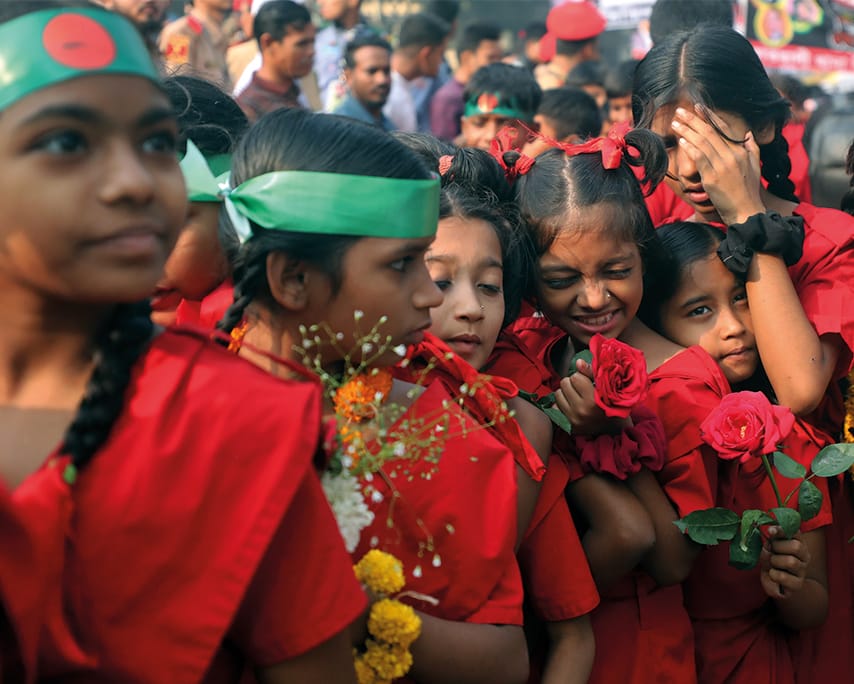Lessons from the Bible on the power of mother language
International Mother Language Day serves as a reminder of the importance of linguistic diversity in preserving cultural heritage, identity, and accessibility to knowledge. As one of the most compelling examples of language localisation and its far-reaching impact, the Bible can teach us a thing or two about linguistic diversity. As the most translated book in the world, its widespread localisation has influenced societies, languages, and ethical systems across generations. However, the Bible’s translation journey raises critical questions about the role of language in storytelling, cultural adaptation, and last-mile initiatives.
When translating a message into multiple languages, there is a fundamental dilemma: Should the goal be to maintain the original intent as faithfully as possible, or should the translation allow for reinterpretation and integration of local traditions to ensure cultural relevance? The Bible’s extensive translation efforts provide insights into this debate. While many translations strive for accuracy, they also incorporate local idioms, metaphors, and storytelling traditions to make the text more relatable.
Localisation is not simply about converting words from one language to another. It is about ensuring that the message is meaningful within the cultural and historical context of the audience. In many cases, accurate localisation involves two-way cultural exchange, integrating local traditions, values, and worldviews into storytelling rather than imposing external narratives.
The Bible’s role in language development
In some regions, Bible translation projects have contributed to developing written forms of indigenous languages, helping preserve and standardise them for future generations. This has had lasting effects on literacy, education, and the promotion of mother languages in communities where oral traditions once dominated. However, while these translation efforts have enhanced language preservation, they have also been historically tied to missionary activity, which sometimes replaced indigenous spiritual traditions rather than integrating with them.
Mother language in last-mile initiatives
However, beyond religious texts, the role of mother languages in last-mile initiatives is crucial. Translations must go beyond direct word-for-word conversion to incorporate local idioms, references, and storytelling styles that resonate with different cultural contexts. In communities with low literacy rates, storytelling must be adapted into oral traditions, audio recordings, and visual formats to enhance engagement.
A commitment to transformational initiatives means ensuring that knowledge and resources are accessible to all, even in remote communities. While the Bible’s influence has spanned centuries, the principles of last-mile localisation should also be applied across secular development efforts, from health campaigns and educational materials to legal awareness and civic engagement programmes.
Challenges and limitations of translation
Despite its strengths, translation alone does not always guarantee full cultural relevance. Certain metaphors, concepts, or historical references may not easily translate across cultures without additional context. While the Bible is a widely translated text, its use as a last-mile storytelling model raises some questions.
First, religious texts often have unique motivations, different from secular storytelling or development communication. Is the Bible the best example of last-mile storytelling, or do other sacred texts, oral histories, and traditional folklore serve local communities differently? Second, it can be argued that Bible translations, particularly those linked to missionary work, have historically disrupted indigenous traditions rather than preserving them.
In contrast, proper localisation should respect and integrate Indigenous narratives instead of overshadowing them. Third, the effectiveness of last-mile storytelling depends on how well the translated message is understood, accepted, and relevant to local traditions. While Bible translations may be the gold standard in linguistic reach, true localisation may require a two-way cultural exchange rather than just linguistic adaptation.
Ultimately, successful last-mile storytelling must go beyond translation, whether in religious, social, or developmental contexts. It should involve a deep engagement with local traditions, ensuring that narratives reflect the lived experiences, histories, and values of the people they aim to reach.
Localisation is most effective when it is about transmitting a message and creating a meaningful dialogue between cultures and generations. What better day to highlight the importance of embracing linguistic diversity in shaping societies and fostering meaningful communication than International Mother Language Day?



